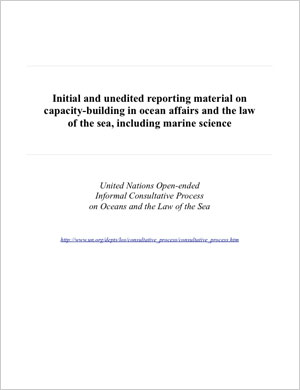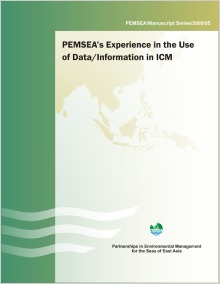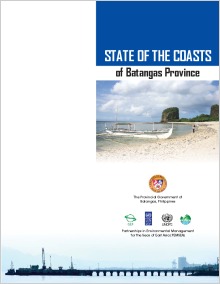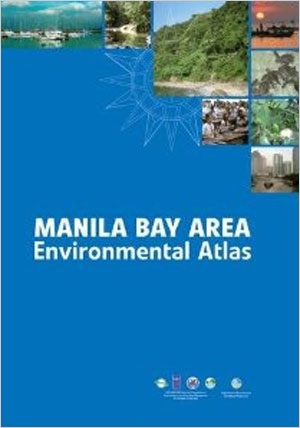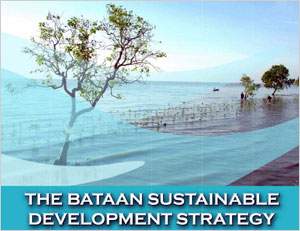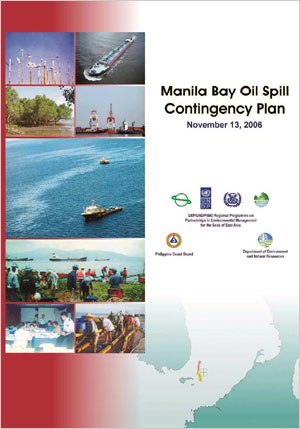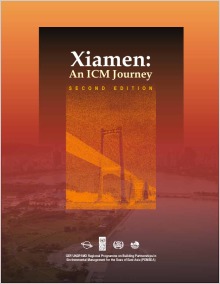
Breadcrumb
The Role of Docosahexaenoic and the Marine Food Web as Determinants of Evolution and Hominid Brain Development: The Challenge for Human Sustainability
Prof. Michael Crawford, of the Institute of Brain Chemistry and Human Nutrition, United Kingdom, explains that fish and seafood provide docosahexaenoic acid (DHA), an Omega-3 fatty acid that the brain needs to function efficiently. Prof. Crawford warns that the general lack of DHA in the current human diet could lead to mental health problems. This underscores the urgency of efforts to manage the world’s fisheries and maintain a healthy supply of this food. Lipids (fats) played a major, as yet unrecognized, role as determinants in evolution. Life originated 3 billion years ago. For the first 2.5 billion years of life, there was ample opportunity for DNA modification. Yet during that time there is no evidence of significant change in life forms. It was not until about 600 million years ago when the oxygen tension rose to a point where air breathing life forms became thermodynamically possible, that a major change is abruptly seen in the fossil records. The sudden appearance of the 32 phyla in the Cambrian fossil record was also associated with the appearance of intracellular detail not seen in previous life forms. That detail was provided by cell membranes made with lipids (membrane fats) as structural essentials. The compartmentalization of intracellular, specialist function as in the nucleus, mitochondria, reticulo-endothelial system and plasma membrane led to cellular specialization and then speciation. Thus not just oxygen but also the marine lipids were drivers in the Cambrian explosion. Docosahexaenoic acid (all-cis-docosa-4,7,10,13,16,19-hexaenoic acid, C22:6ω3 or C22:6,n-3, DHA) is a major feature of marine lipids. It requires six oxygen atoms to insert the six double bonds so it would not have been abundant before oxidative metabolism became plentiful. Docosahexaenoic acid (DHA) provided the membrane backbone for the emergence of new photoreceptors that converted photons into electricity laying the foundation for the evolution of other signaling systems, the nervous system and the brain. Hence the omega 3 DHA from the marine food web must have played a critical role in the evolution of vision and the brain. There is also clear evidence from molecular biology that DHA is a determinant of neuronal migration, neurogenesis and the expression of several genes involved in brain growth and function. That same process was essential to the ultimate cerebral expansion in human evolution. There is now incontrovertible support of this hypothesis from fossil evidence of human evolution taking advantage of the marine food web. Lipids are still modifying the present evolutionary phase of our species with their contribution to a changing panorama of non-communicable diseases. The most worrying change in disease pattern is the sharp rise in brain disorders which in the European Union has overtaken the cost of all other burdens of ill health at €386 billion for the 25 member states at 2004 prices, and in the UK, £77 billion in 2007 and £105 billion in 2010, a cost greater than heart disease and cancer combined. The rise in mental ill health is now being globalized. The solution to the rising vascular disorders last century and now brain disorders lies in a radical re-appraisal of the food system which last century was focused on protein and calories with little attention to the requirements of the brain. The development of marine agriculture from estuarine, coastal and oceanic resources in a way that mankind learnt to develop land resources 10,000 years ago, is likely to play a key role in this re-appraisal and in our future health and intelligence.
Capacity-building in Ocean Affairs and the Law of the Sea
In its resolution 64/71, the United Nations General Assembly decided that the eleventh meeting of the United Nations Open-ended Informal Consultative Process on Oceans and the Law of the Sea (Consultative Process) would focus its discussions on capacity-building in ocean affairs and the law of the sea, including marine science. The present reporting material addresses this topic.
PEMSEA's Experience in the Use of Data/Information in ICM
The Partnerships in Environmental Management for the Seas of East Asia (PEMSEA) is a multisectoral regional partnership that promotes the application of integrated coastal management (ICM) for the sustainable development of marine and coastal areas in the East Asian Seas (EAS) Region. PEMSEA applies a number of tools and procedures as part of the ICM program development and implementation cycle. Two of these tools, namely the integrated information management system (IIMS) and the State of the Coasts (SOC) reporting system have been developed in order to facilitate the consolidation and integration of data/information on the physical, geographic, social, economic and environmental aspects of the ICM site. The IIMS and SOC strengthen marine and coastal area, and river basin management, as seen in the two examples of Manila Bay and Batangas Province. The comprehensive coverage and data sets contained in the IIMS allow ICM managers to generate a number of outputs that are vital to ICM program development and implementation. The SOC report consolidates data and evaluates it against selected indicators, providing a report card on trends in the area with respect to marine and coastal governance and environmental management programs.
Coastal Land- and Sea-Use Zoning Plan of the Province of Bataan
The Coastal Land- and Sea-Use Zoning Plan (CLSUZP) reflects the optimistic value of specialized use pattern of the coastal areas of Bataan. It includes a set of actions to reduce conflicts among several users of the water body and coastal resources of the province and address major issues and areas of concern. The plan clearly indicates specific activities, timeframe, and responsible agencies/institutions to attain the corresponding objectives.
State of the Coasts of Batangas Province
The State of the Coasts of Batangas Province was developed to assess the progress and impacts of ICM implementation in the Province. The report serves as the first comprehensive assessment of the Province's progress in terms of the SDCA framework, and in relation to its implementation of the Batangas Province Strategic Environmental Management Plan (2005-2020). This report was prepared through the concerted efforts of stakeholders, namely: national, provincial and municipal government agencies; nongovernment entities; the private sector; universities; and community groups. The contents of this report were validated through site visits to 10 coastal municipalities for field verification of information, and through interviews with government and nongovernment stakeholders throughout the Province. The results were reviewed and concurred by stakeholders during the final SOC workshop, which was conducted on 24 June 2008 in Batangas City, Philippines. In general, the Batangas SOC report noted positive developments in the province particularly in various governance aspects. The approach taken by the SOC and the focus on the local level provides important information on what is happening on the ground which is often not readily available. By building on strong data and monitoring system at the local level, the local SOC reports can eventually be rolled up into reliable national and regional SOC.
Manila Bay Area Environmental Atlas
The Manila Bay Area Environmental Atlas provides a relevant source of information necessary in policy formulation, planning, decision-making, monitoring and integrated river basin and coastal area management. The Atlas describes physical, biological and socioeconomic characteristics of the Manila Bay Area (MBA), provides evidence of the valuable contribution of the habitats and resources to the people and economy of the area, delineates the various environmental issues in and around the bay, and reviews the actions that have been implemented to overcome challenges to sustainable development and management of the MBA. The Atlas is a compilation of data presented in thematic and composite maps, graphs and tables describing the characteristics and status or condition of the MBA. Each map is usually accompanied by a textual description of related findings, socioeconomic significance, risks and challenges that affect the MBA. Photographs are included in the document for better understanding of the places and features of the area.
The Bataan Sustainable Development Strategy
The Bataan Sustainable Development Strategy constitutes broad statements of activities for long term (20 years) implementation of Bataan Integrated Coastal Management Program. This would serve as a comprehensive environmental management framework that would provide directions in achieving targeted outcomes and formulating a series of specific action plans and programs involving the participation of both government and non-government sectors. The Bataan Sustainable Development Strategy (BSDS) embodies the VISION and MISSION of the people of Bataan to chart a course for the preservation of Bataan's rich natural endowments. It is an optimistic statement by and for the people of Bataan to whom the province's natural resources, particularly the coastal environment, provide a source of livelihood, transportation, recreation, a sense of beauty, culture, and history. The sustainable development strategy is a document covering the environmental, economic, and social aspect of Bataan's natural endowments to which Bataeños ascribe different values and threats – real or perceived – that impair those values. It is not easy to turn this knowledge and concern into concrete actions. It would take combined efforts of the local government – from provincial level to municipal and barangay levels – and the various sectors comprising the civil society, to work hand in hand in realizing this vision and mission. This would involve the changing of people’s behavior and attitude, which is not a small task. The BSDS takes on this challenge by tasking every level of society with the responsibility of managing our God-given natural resources from our forest, rivers, and overall coastal environment. Dependence on a common resource will make it possible for us, stakeholders, to start realizing a common vision towards a sustainable natural resources management.
Manila Bay Oil Spill Contingency Plan
The Manila Bay Oil Spill Contingency Plan aims to outline the multi-sectoral arrangement for responding to oil spills in Manila Bay, with the end in view of protecting the Bay from oil pollution or, where this is not possible, to minimize it effects. It also aspires to ensure a timely, measured and effective response to oil spill incidents of tier 1 or tier 2 magnitudes which may occur within the Manila Bay.
Xiamen: An ICM Journey
The Xiamen ICM Project served as a “training laboratory” for ICM training, wherein local professionals shared their experiences and expertise in ICM program implementation. There are four key lessons that emerge from the Xiamen experience. These are: 1) Environmental and resource management projects are effective if there is political will and support from the government, both national and local, that is strong enough to ensure the passage of required legislation and funding support; 2) By linking scientists and other technical experts with the political decisionmakers, there is more room for rational choices that create positive environmental effects; 3) The ability of local citizens to contribute to improving the conditions of their environment succeeds because of their heightened awareness and exposure, training and willingness to take action when needed; and 4) A step-wise approach to problem solving is recommended, considering that problems cannot be addressed simultaneously.
Print version is available for FREE. Pay only for the shipping cost.

